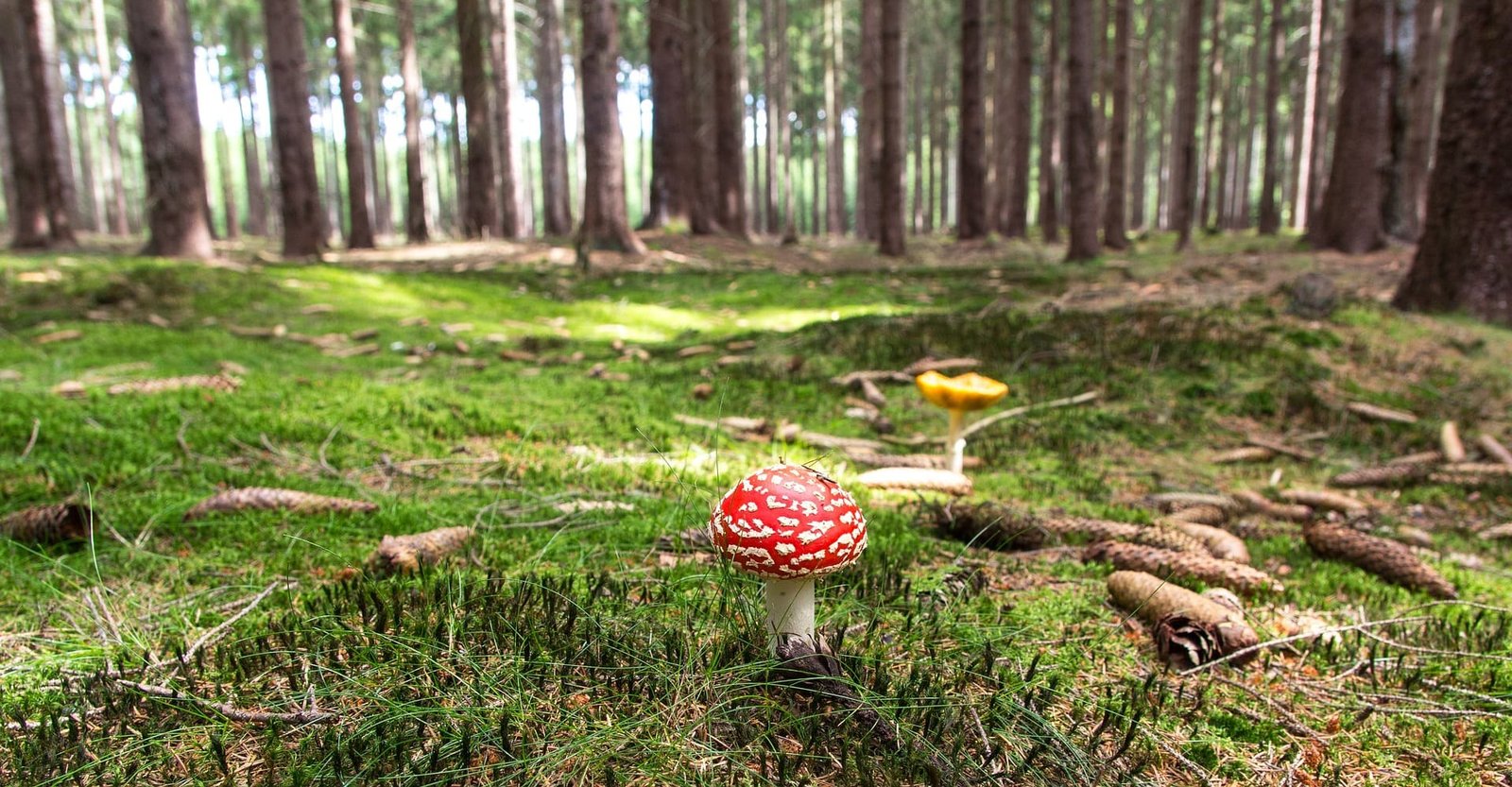Toadstool: myths, legends and effects

The fly agaric is a remarkable and fascinating mushroom that can be found in many parts of the world. With its deep red cap and its characteristic white spots, it is not only a real feast for the eyes, it also has a special significance in many Myths and legends attributed.
Interestingly, as a psychoactive organism, it has been used for thousands of years in many different places around the world to support deep healing and cleansing processes.
“The fly agaric was considered sacred and was revered by many cultures as a symbol of fertility, happiness and growth.”
A few myths and legends
Legends in Scandinavia say that the fly agaric is a gateway to another world or dimension. Trolls and other mythological creatures are said to use this mushroom as a means of transportation to travel between different worlds. Those who eat it are said to be granted the ability to see or feel those very worlds.
Some Nordic peoples also believed that the fly agaric was the blood of the god Odin and that it helped them to contact the pagan gods. The fly agaric was considered sacred and was revered as a sign of fertility and growth. Over time, many of these pagan legends were incorporated into Christian traditions, and so the fly agaric is also a popular, iconic symbol of the Christmas season. In winter stories, it is depicted as the preferred food of reindeer and elves, and grants them the ability to fly.
In Siberia and other regions in northern Eurasia, it has been known for centuries as the "shaman's mushroom," which is said to help connect the shaman with the spiritual world and give him access to the forces of the universe. The visions that the "shaman's tea" evokes were interpreted as clues from the spiritual world and as instructions for the shaman to heal illnesses, solve problems, or protect the community. To do this, the mushroom was chopped up and then boiled in water to make a type of tea. By applying heat, the poisonous ibotenic acid contained in the fresh fly agaric was converted into the psychoactive but physically harmless active ingredient muscimol. The mushroom was then often combined with other plants or substances to enhance or change the healing effect.
The ancient Romans also believed in its magical powers and used it in various cultic practices or as a sacrifice.
In Roman mythology, the fly agaric was associated with, among other things, the god of wine, Bacchus. Bacchus was considered the patron saint of intoxication and drinking, and it was believed that the fly agaric was a kind of gateway to Bacchus' world - so it was used in ceremonies to worship the god.
In addition, the fly agaric was also considered a symbol of good luck and prosperity in ancient Rome. It was common to place fly agaric statues in the homes of the wealthy and in temples to promote good luck, health and prosperity.
There are also numerous myths and legends surrounding the fly agaric among the indigenous peoples of North America. For example, some tribes believed that the mushroom came from the tears of a ram that was killed by a thunderbird. Other indigenous peoples see the fly agaric as a symbol of the sun and use it in their ceremonies to honor the sun god.
In the world of fairy tales, the fly agaric is often associated with fairies and elves. In many stories, it is a gift from the fairies to humans to give them magical powers. And is there any truth to that?
Effects and use in medicine
In the traditional medicine of many cultures, the fly agaric has been used as a medicinal remedy for thousands of years. In traditional Chinese medicine and also in Siberian folk medicine, it is used to treat pain and inflammation, for example. If the mushroom is dosed correctly, it is said to have a range of positive effects and changes in perception, including euphoria and relaxation.
An active substance in the fly agaric is the psychoactive alkaloid muscimol, which acts on our central nervous system and is said to have a calming, regulating effect on the organism. There is evidence that muscimol may be able to help treat depression and neurological diseases such as Alzheimer's and Parkinson's. This is suggested by some studies on rodents, including a study published in 2017 in the Journal of Psychopharmacology. However, there is currently little data on its effects on humans.
It is important to note that further studies are needed to better understand the long-term effects and risks of the mushroom. The fly agaric has therefore not yet been used in modern medicine.
Therefore, it is important to point out that fly agaric should not be taken orally due to its potential toxicity. We recommend smoking it and learning more about its properties and benefits.
Side effects and prejudices
Although the fly agaric is considered a sacred mushroom in many cultures, there are many prejudices to be dispelled in this country. It is not as dangerous as most people believe.
In its pure, powdered form, it is only psychoactive, not hallucinogenic. It therefore alters consciousness and not the visual field of vision.
It is important to note that the composition of the active ingredients in the mushroom can vary depending on the region and time of year and that you should be very well informed about possible uses, dosage and preparation. If you buy the fly agaric online, it is essential to find a trustworthy retailer and to buy it from sustainable wild collection.
Whether or not one enjoys the various legends, the fly agaric is undoubtedly a fascinating part of our folklore and culture. Its unique, striking appearance has delighted and captured the imagination of people for many generations. The mystical is fascinating.
Overall, the symbolism of the fly agaric in many cultures shows how valuable and deep-rooted the connection between humans and nature is. As a symbol of growth, renewal and connection with the spiritual, it reminds us how important it is to respect our place in the world and to respect the forces of nature.

More about the fly agaric
-
Fly agaric as incense
The fly agaric (Amanita muscaria) is a well-known symbol of fairy tales and myths and is often associated with witches, wizards and elves. But did you know that the fly agaric can also be used as incense in our world? -
Fly agaric powder used in cacao ceremony
In today's world, we are constantly looking for new ways to increase our well-being and improve our health. The cacao ceremony is becoming increasingly popular in spiritual circles and also in urban environments. -
Dried toadstool
You have certainly heard of Amanita, which is a dried fly agaric, also called “guru mushroom”, which is used in spiritual practice and in Ayurvedic medicine.
Published
29 March, 2023
Author
Eva & Elias
Reading time
5 minutes


Pingback: Dried fly agaric Suyana -
Pingback: Suyana - Fly agaric powder in the cocoa ceremony